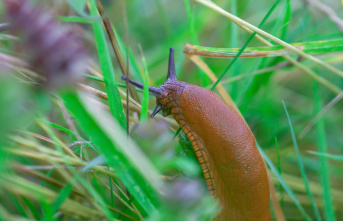Ordinary house dust is made up of various tiny particles - such as skin flakes and hair, lint and fabric or plant fibers or house dust mites and their legacies. For this reason, allergy sufferers in particular have to dust at regular intervals. But which tools actually work best and can the (unfortunately unavoidable) dust infestation be somehow reduced? We got to the bottom of the questions.
1. Cotton towels
With pure cotton you catch almost all dust particles (for the moment). However, the cleaning cloth made of natural fibers should only be slightly moistened beforehand - otherwise you would smear the dust but not remove it. When dusting, you should also make sure to make circular movements to effectively collect the fine particles. It is also important to wash out the cotton cloth from time to time.
2. Microfiber Cloths
Microfiber cloths are particularly popular for dusting, as they can be used for drying and have an electrostatic attraction to dust. However, you should use the cloths with caution, as they have a rough structure and can scratch sensitive furniture. For this reason, these dusting cloths are not recommended for smooth or high-gloss surfaces.
3. Feather duster
A classic has always been the traditional feather duster, with which – thanks to the integrated telescopic rod – hard-to-reach areas in particular can be cleaned. With the various attachments, radiators, car fittings, chests of drawers or picture frames can be easily dusted off. Alternatively, there are also disposable dusters from Swiffer, but they end up in the garbage after use and are therefore not very sustainable.
To capture as much dust as possible, you should use the following techniques:
Even if dust deposits cannot be avoided in principle, they can definitely be reduced. All you have to do is implement the following tips:
Proper ventilation If your windows are left open all day, not only does fresh air flow through the apartment - but also a lot of dust. To reduce the infestation, you should ventilate the room for a maximum of ten minutes in the morning and evening and then close the windows again. This technique also promotes optimal humidity, which allows the dust to be better bound.
Extra tip: Houseplants also increase the humidity and thus help to bind the dust better. Unfortunately, dust also collects on their leaves, which Sue should remove regularly.
Knock out dust collectorsTextiles such as duvets and carpets or pillows are real dust magnets. Since they don't fit in a washing machine, they should be shaken out or tapped regularly - outdoors, of course. Unfortunately, the mere suction with a vacuum cleaner cannot remove deep-seated dust particles, unless you use a mattress attachment or dust mite vacuum.
Dusting radiators A lot of dust usually accumulates between the radiators and there is a reason for that: the warm air transports the fine particles into the air – and they sink back down when the air is cold. To thoroughly clean the fins and grooves, it is best to use a classic feather duster or special radiator cleaner for hard-to-reach places.
This article contains so-called affiliate links. There is more information here.












